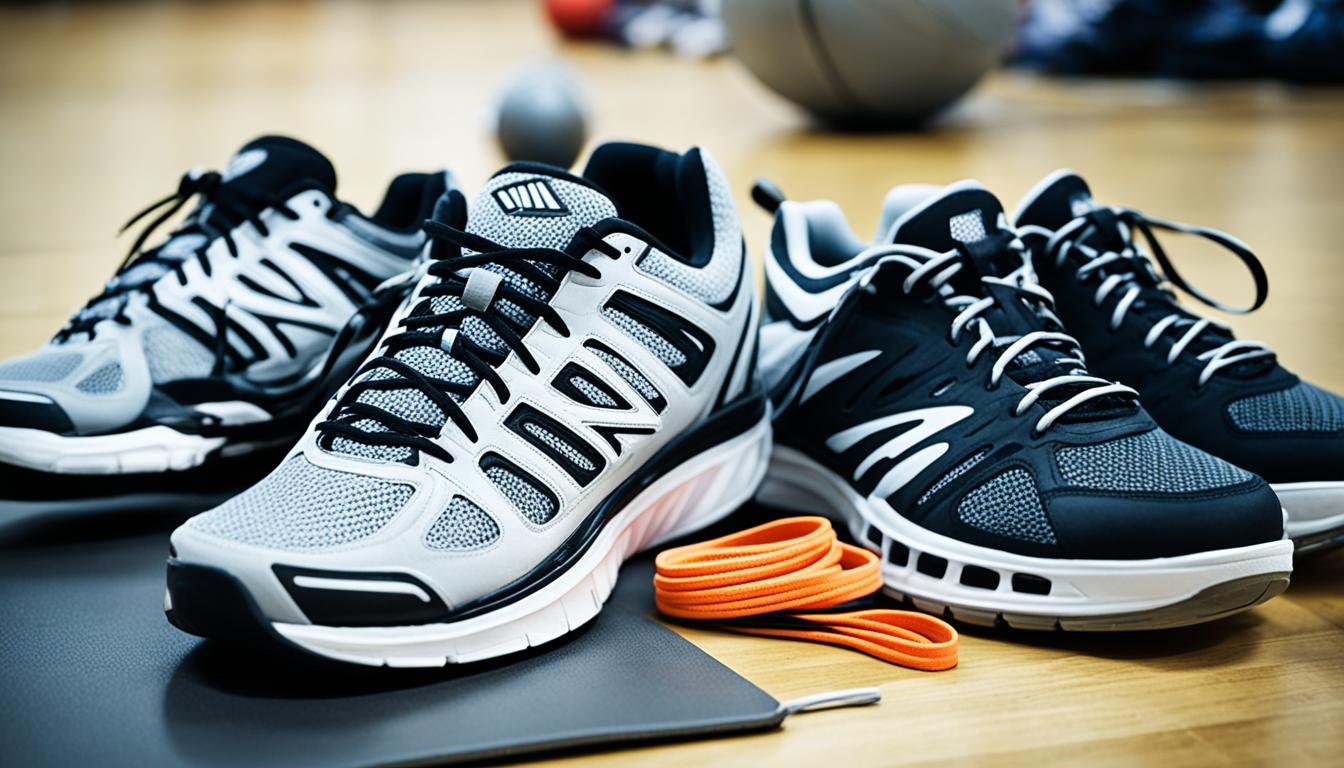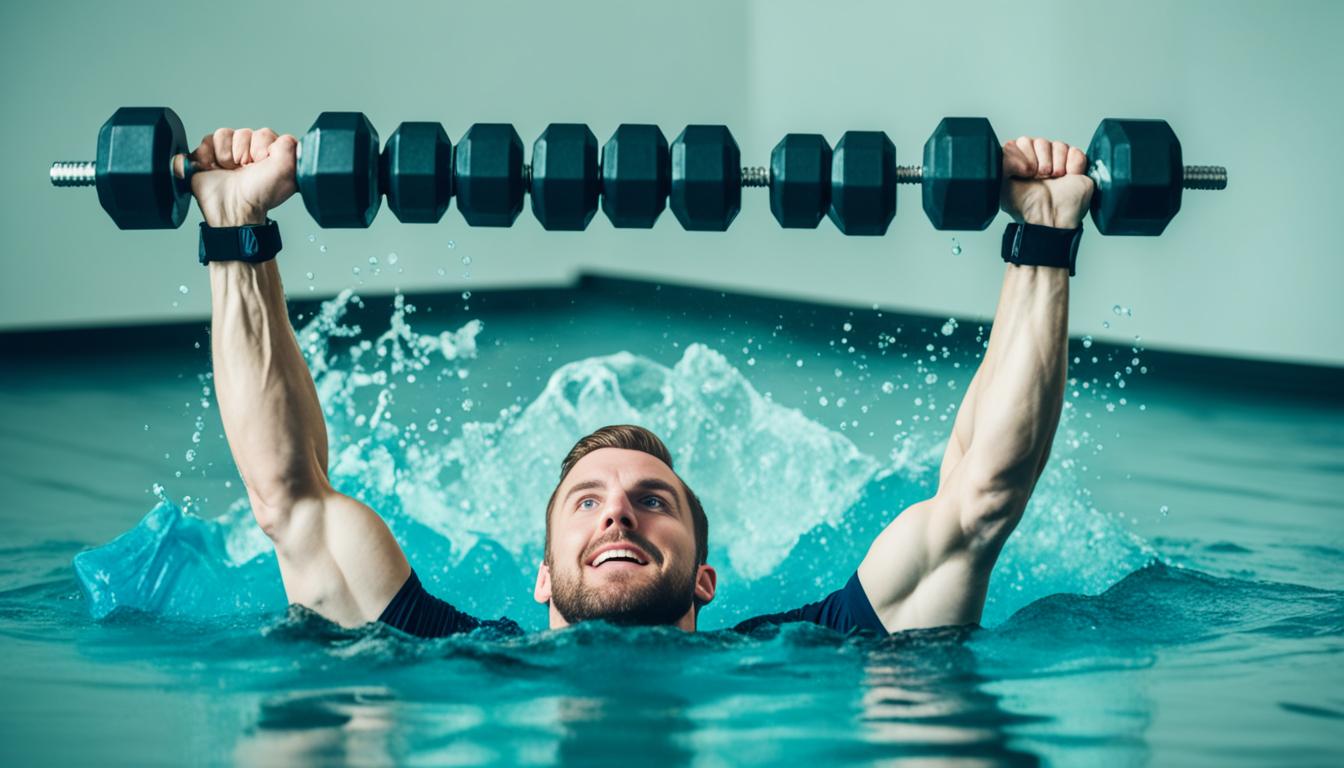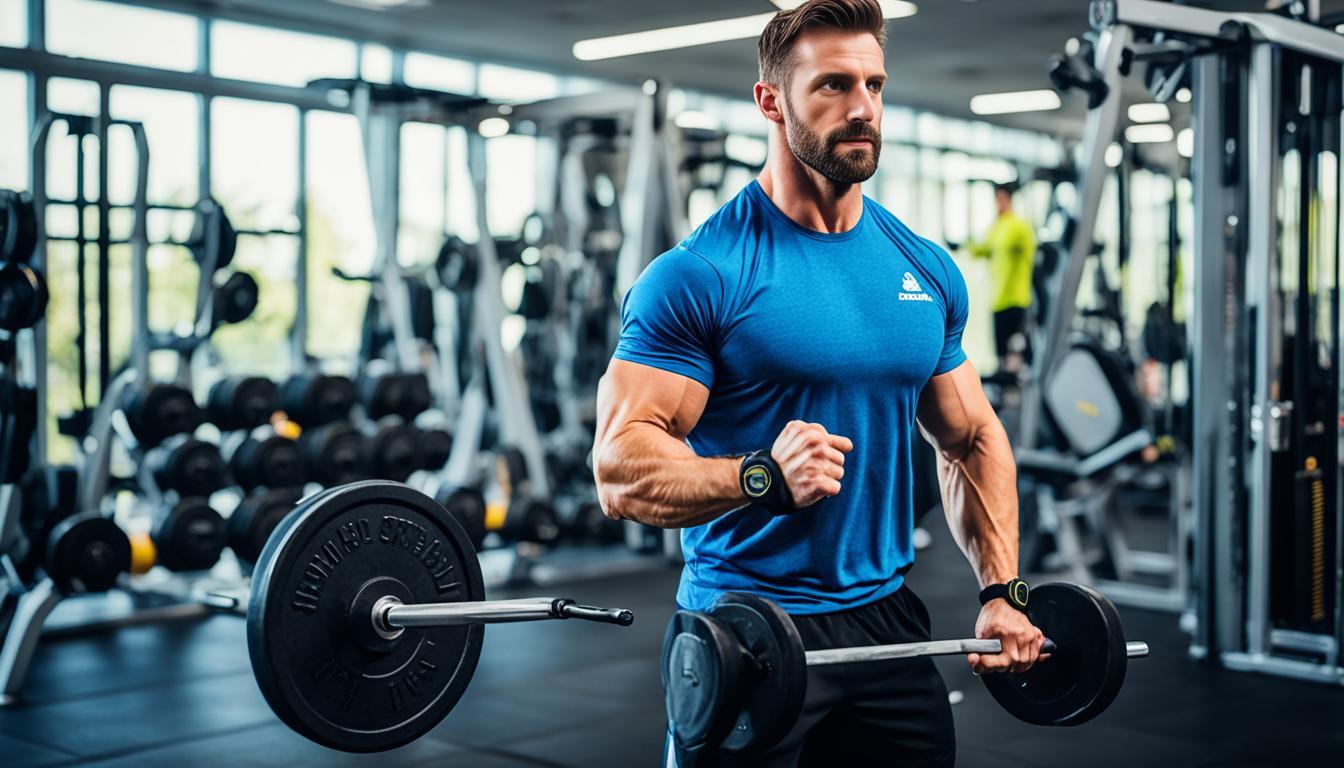When it comes to working out at the gym, safety should always be a top priority. Whether you’re a seasoned gym-goer or just starting your fitness journey, taking the necessary precautions can help you avoid injuries and make the most of your workouts. In this article, we’ll explore essential gym safety tips and exercise facility safety guidelines to keep in mind.
Key Takeaways:
- Start your exercise program slowly and gradually increase intensity
- Consult with a doctor before engaging in vigorous physical activity
- Dress appropriately and replace worn-out athletic shoes
- Implement warm-up, stretching, and cool-down routines
- Stay hydrated and take regular rest days
Dress Appropriately and Replace Athletic Shoes
When it comes to gym safety, it’s essential to dress appropriately for your workouts. Wearing the right clothing can contribute to your overall safety and comfort in the gym. Opt for comfortable, loose-fitting clothes that allow for free movement during exercise. Choose lightweight materials that help regulate body heat and prevent excessive sweating.
In hot weather, it’s especially important to choose light-colored clothing for outdoor workouts. Lighter colors reflect the sun’s rays and help keep your body temperature down. On the other hand, when exercising in cold weather, dress in layers that can be easily removed as you warm up.
One often overlooked aspect of gym safety is the condition of your athletic shoes. Worn-out shoes can increase the risk of accidents and lead to injury. Ensure that your workout shoes provide proper support and cushioning, as this helps absorb impact and maintain stability during exercises.
The general guideline for replacing athletic shoes is every 300 to 500 miles or every 6 to 8 months. However, the replacement timeline may vary based on factors such as shoe material, workout frequency, and the surfaces you train on. Regularly inspect your shoes for signs of wear and tear, including worn-out soles or thinning cushioning, and consider replacing them when necessary.
“Properly fitting athletic shoes are crucial to providing the support and protection your feet need during workouts.”

Choosing the right athletic shoes
When selecting new athletic shoes, make sure to consider your specific workout needs. Different activities require different types of footwear. For example, running shoes provide additional cushioning to absorb shock when jogging or running, while cross-training shoes offer versatility for various exercises.
Visit a specialty sports store or shoe retailer that offers professional fittings. This allows you to find the right shoe size and width for your feet. Take the time to try on different brands and styles to find the most comfortable and supportive option for your workouts.
Why replacing athletic shoes is important
Regularly replacing your athletic shoes is crucial for maintaining proper foot and ankle alignment during exercises. Worn-out shoes can lead to instability and improper weight distribution, increasing the risk of sprains, strains, or other foot-related injuries.
By prioritizing gym safety and ensuring that you dress appropriately and replace your athletic shoes when needed, you can minimize the risk of accidents and injuries during your workouts. Remember, your safety should always be a top priority.
Warm Up, Stretch, and Cool Down
Proper warm-up, stretching, and cool-down routines are crucial for preventing injuries during exercise. Before starting any workout, it’s important to warm up and prepare your body. This can be done by engaging in light aerobic activity, such as jogging in place or jumping jacks, to increase blood flow and raise core body temperature. Taking deep breaths and rehearsing the movements you’ll be performing during your workout can also help activate the muscles.
Once you’re warmed up, it’s time to stretch. Stretching helps improve flexibility and range of motion, reducing the risk of muscle strains and tears. When stretching, remember to do it slowly and carefully, avoiding any bouncing or jerking motions. Hold each stretch for 10 to 20 seconds and release it gradually. Never force a stretch to the point of pain, and always maintain control throughout the movement.
During strength training exercises, it’s important to move through the full range of motion with each repetition. This helps enhance muscle strength and joint stability. Remember to breathe regularly and maintain proper form to reduce the risk of injury.
Finally, cooling down is the last phase of your exercise routine. Cooling down allows your heart rate and breathing to gradually return to normal. This can be done by continuing with low-intensity exercise, such as walking or gentle stretching. Gradually slow down and lessen the intensity of your movements before stopping completely.

Remember:
“Effective warm-ups, stretching, and cool-downs are essential components of a safe and injury-free workout. By adopting these practices, you can protect your body and ensure a successful fitness journey.”
Hydration, Rest, and Injury Management
Staying properly hydrated is essential for gym safety. By drinking enough water, you can prevent dehydration and heat injuries. To stay adequately hydrated, it is recommended to drink 1 pint of water 15 minutes before starting your exercise routine. After your workout, have another pint of water to replenish your fluid levels. During your exercise sessions, remember to take regular water breaks, ideally every 20 minutes, to keep your body hydrated and functioning optimally.
Rest is another crucial aspect of minimizing the risk of injuries. It’s important to schedule regular rest days in between your workout sessions to allow your body to recover and rebuild. Listen to your body and rest when you feel tired or fatigued. Pushing yourself too hard without proper rest can increase the chances of injuries and hinder your progress towards your fitness goals.
If, despite taking precautions, you experience an injury during exercise, it’s important to take immediate action to prevent further damage. Depending on the nature and severity of the injury, you may need to apply appropriate protective measures, such as a sling, splint, or brace. Remember to follow the RICE method: rest the injured area, apply ice to reduce swelling, use compression to minimize inflammation, and elevate the injured limb or area to reduce swelling and improve blood flow. However, if the pain or symptoms persist or worsen, it is crucial to seek medical attention promptly for proper evaluation and treatment.
Remember, prioritizing hydration, rest, and injury management are vital components of gym safety and overall fitness. By taking these precautions, you can minimize the risk of injuries and ensure a healthy and enjoyable fitness journey.

Conclusion
Safety should always be a priority when engaging in gym workouts. By following proper precautions and exercising caution, you can create a safe environment for exercise and minimize the risk of injuries. Implementing exercise facility safety guidelines and safe training practices is essential for a secure fitness journey.
Start your exercise program slowly and gradually increase intensity to avoid pushing your body beyond its limits. Dress appropriately for your workouts and ensure you have proper support and cushioning by replacing your athletic shoes regularly. Additionally, implementing warm-up and cool-down routines will help prepare your body for exercise and prevent muscle strain or injury.
Stay hydrated during your workouts by drinking water regularly, and don’t forget to take regular rest days to allow your body to recover and prevent overuse injuries. If you do experience an injury, it’s crucial to seek medical attention and manage it promptly to avoid further complications.
By prioritizing gym safety and adhering to exercise facility safety guidelines, you can enjoy a safe and effective workout experience, achieving your fitness goals while minimizing the risk of injuries. Remember, your health and well-being are paramount, so take the necessary precautions to ensure a secure and enjoyable fitness journey.
FAQ
How should I dress for workouts at the gym?
It is important to wear comfortable, loose-fitting clothes that allow for free movement and regulate body heat. Dress appropriately for the weather and choose light-colored clothing for outdoor exercise in high temperatures. In cold weather, dress in layers that can be easily removed.
How often should I replace my athletic shoes?
It is recommended to replace your athletic shoes every 300 to 500 miles or every 6 to 8 months, depending on factors such as shoe material, workout frequency, and workout surfaces. Proper support and cushioning are essential for gym safety.
What should I do for warm-up, stretching, and cool-down?
Before starting any exercise, warm up your body by running in place, breathing deeply, or rehearsing the movements of the exercise to follow. Stretch slowly and carefully, holding each stretch for 10 to 20 seconds and releasing it gradually. During strength training, move through the full range of motion with each repetition and breathe regularly. To cool down, gradually slow down and lessen the intensity of your movements before stopping completely.
Why is staying hydrated important for gym safety?
Staying properly hydrated is essential to prevent dehydration and heat injuries. Drink enough water before, during, and after exercise. It is recommended to drink 1 pint of water 15 minutes before starting exercise and another pint after cooling down. During exercise, have a drink of water every 20 minutes or so.
How important is rest and injury management in gym workouts?
Rest is essential for preventing injuries. Schedule regular days off from exercise and rest when tired. If you experience an injury during exercise, apply protection such as a sling, splint, or brace and follow the RICE method: rest, ice, compression, and elevation. If the pain or symptoms persist, it is important to seek medical attention.
Source Links
- https://orthoinfo.aaos.org/en/staying-healthy/safe-exercise/
- https://www.womenshealth.gov/getting-active/physical-activity-safety
- https://www.betterhealth.vic.gov.au/health/healthyliving/exercise-safety


